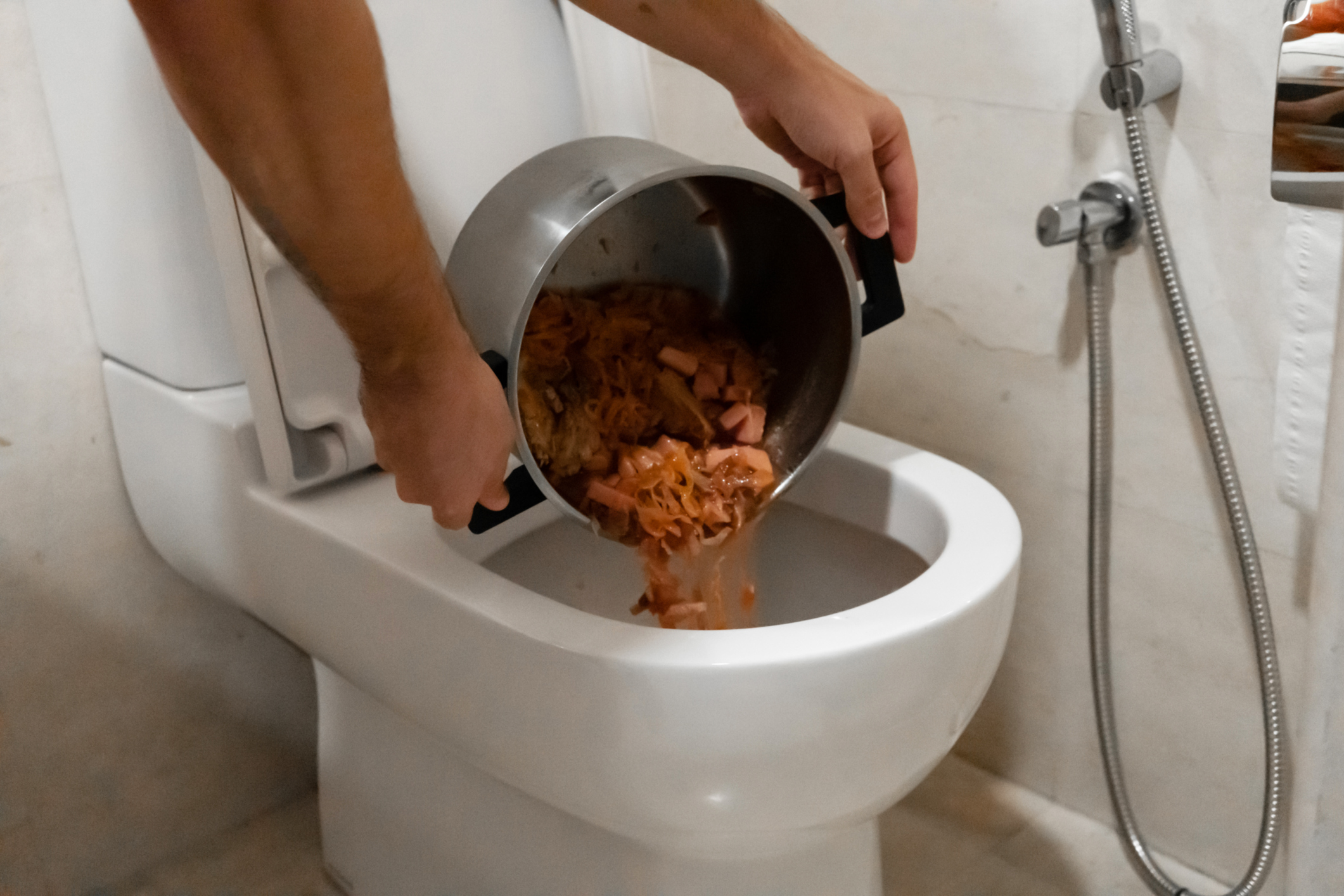Is it Rational to Dispose of Food in the Toilet?
Is it Rational to Dispose of Food in the Toilet?
Blog Article
We have unearthed this great article pertaining to What Can Happen If You Flush Food Down the Toilet? below on the internet and accepted it made perfect sense to discuss it with you on this page.

Intro
Many individuals are frequently faced with the problem of what to do with food waste, specifically when it involves leftovers or scraps. One common question that occurs is whether it's fine to purge food down the commode. In this article, we'll delve into the reasons why people might think about flushing food, the repercussions of doing so, and alternate approaches for correct disposal.
Reasons that individuals could think about flushing food
Lack of understanding
Some individuals may not know the potential harm caused by flushing food down the toilet. They may incorrectly believe that it's a harmless practice.
Convenience
Purging food down the commode might appear like a quick and easy option to taking care of undesirable scraps, particularly when there's no close-by trash bin available.
Idleness
Sometimes, people may merely choose to flush food out of large negligence, without thinking about the consequences of their activities.
Repercussions of flushing food down the toilet
Ecological influence
Food waste that ends up in rivers can add to air pollution and injury marine ecological communities. In addition, the water utilized to purge food can strain water resources.
Plumbing issues
Purging food can bring about blocked pipelines and drains pipes, creating pricey plumbing repair services and aggravations.
Kinds of food that should not be purged
Fibrous foods
Foods with coarse textures such as celery or corn husks can obtain entangled in pipes and trigger clogs.
Starchy foods
Starchy foods like pasta and rice can take in water and swell, leading to obstructions in pipes.
Oils and fats
Greasy foods like bacon or cooking oils need to never be purged down the bathroom as they can strengthen and cause obstructions.
Correct disposal techniques for food waste
Making use of a garbage disposal
For homes furnished with garbage disposals, food scraps can be ground up and flushed with the pipes system. Nevertheless, not all foods appropriate for disposal in this manner.
Recycling
Specific food product packaging products can be recycled, minimizing waste and decreasing environmental impact.
Composting
Composting is a green method to dispose of food waste. Organic materials can be composted and utilized to enhance dirt for horticulture.
The importance of proper waste administration
Minimizing ecological harm
Proper waste administration techniques, such as composting and recycling, help reduce contamination and protect natural deposits for future generations.
Shielding pipes systems
By staying clear of the technique of flushing food down the bathroom, house owners can stop expensive pipes repair services and preserve the stability of their plumbing systems.
Final thought
To conclude, while it may be appealing to flush food down the bathroom for benefit, it is essential to comprehend the potential consequences of this activity. By taking on correct waste administration methods and taking care of food waste sensibly, people can contribute to healthier pipes systems and a cleaner atmosphere for all.
FLUSH FOOD DOWN THE TOILET?
FLUSHING FOOD CAN CAUSE BLOCKED DRAINS IN YOUR HOME
All of the plumbing fixtures in your home are connected to the same sewer pipe outside of your home. This outdoor sewer pipe is responsible for transporting all the wastewater from your home to the Council sewer mains. Even small pieces of food that go down the kitchen sink can cause problems for your sewer. It should therefore be obvious that flushing larger bits of food, such as meat, risks a clog in either the toilet itself or the sewer pipes. Flushing greasy food is even more problematic because oil coagulates when it cools, coating the interior lining of your pipes.
THE TOILET IS NOT A BIN
Food isn’t the only thing that people shouldn’t be flushing down the toilet. People use the toilet to dispose of all kinds of things such as tampons, makeup wipes, dental floss, kitty litter and even underwear. Water goes to great lengths to educate residents about the high costs and stress placed on wastewater treatment systems simply from people flushing the wrong stuff down the toilet. It costs taxpayers millions of dollars each year, and homeowners thousands in blocked drain repairs.
FLUSHING FOOD IS A WASTE OF WATER
Flushing food is a waste of our most precious resource - water. In June this year Level 1 water restrictions were introduced to protect water supply from drought conditions. Much of New South Wales continues to be affected by prolonged drought with recent figures revealing up to 97 per cent of the state remains in drought. Depending on whether you have a single or dual flush toilet, every single flush uses between five and 11 litres of water. In the current climate this is a huge amount of water to be wasting on flushing food that should be placed in the bin (or better yet, the compost).
https://www.jabplumbingsolutions.com.au/blog/can-you-flush-food-down-the-toilet

I'm certainly very taken with Is it safe to flush food (especially rice) down the toilet? and I am hoping you enjoyed reading the entire blog entry. So long as you appreciated our post kindly remember to share it. Thank you so much for your time invested reading it.
Request A Quote Report this page